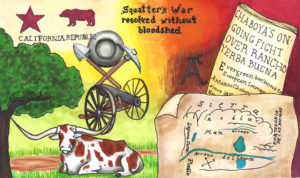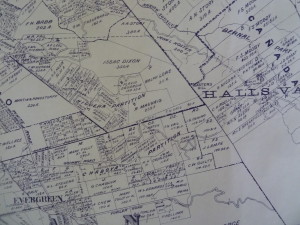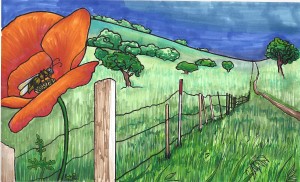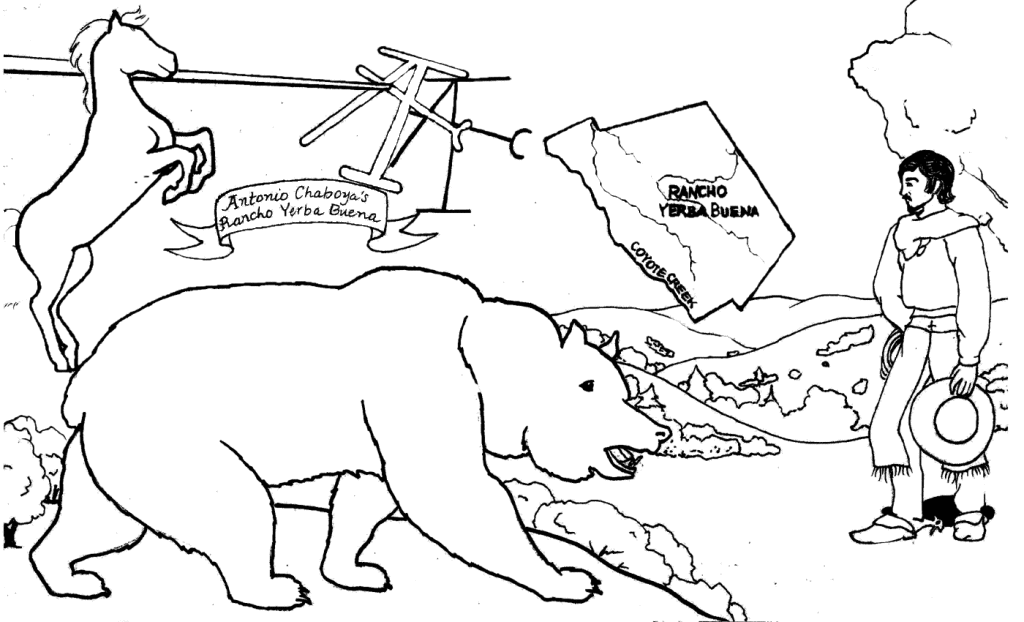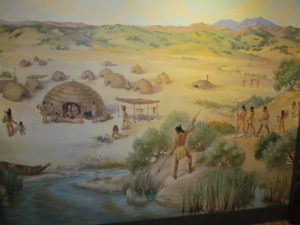 Our fair Evergreen certainly has seen so many changes since Europeans first came. Our City, or Pueblo, of San Jose was founded the year after the Revolutionary War, 1777. Pueblo de San Jose was the first city in “New Spain” and the first non-religious settlement. Back then, it was Spanish Territory. In 1822, Mexico would win their independence and Alta California would become Mexican Territory. Evergreen was Rancho Yerba Buena through the Mexican Period. In 1848, the Bear Republic would revolt, and Statehood was inevitable in 1850 after Gold was found. Evergreen would be flooded with European newcomers, looking for the American Dream. All that having been said, and having been written down, Evergreen was around before the written record.
Our fair Evergreen certainly has seen so many changes since Europeans first came. Our City, or Pueblo, of San Jose was founded the year after the Revolutionary War, 1777. Pueblo de San Jose was the first city in “New Spain” and the first non-religious settlement. Back then, it was Spanish Territory. In 1822, Mexico would win their independence and Alta California would become Mexican Territory. Evergreen was Rancho Yerba Buena through the Mexican Period. In 1848, the Bear Republic would revolt, and Statehood was inevitable in 1850 after Gold was found. Evergreen would be flooded with European newcomers, looking for the American Dream. All that having been said, and having been written down, Evergreen was around before the written record.
California was estimated to have had 13,000-15,000 natives before Spanish colonization. Modern Day Evergreen would be home to Native American several tribes. Hundreds of campsites would be evident in Silver Creek Valley Country Club alone before its construction in the early 1990’s. Artifacts would be found over by the Villages and what would’ve been the Blauer Ranch in the 1960’s. Arrowheads and mortars would be found all over Evergreen.
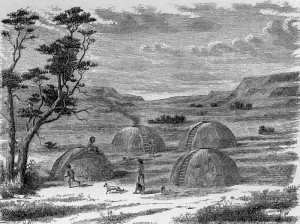 I have been told to be delicate in how I label the Evergreen Native people. For sure, Ohlone is an appropriate title, but that’s most Natives in Santa Clara Valley. The larger umbrella is Costanoan, all over the South Bay Area to Monterey. As this narrows, the labels become less sure without first person confirmation. An anthropologist might lump them in with the larger Muwekma Ohlone group. Let’s peek under the smaller umbrella.
I have been told to be delicate in how I label the Evergreen Native people. For sure, Ohlone is an appropriate title, but that’s most Natives in Santa Clara Valley. The larger umbrella is Costanoan, all over the South Bay Area to Monterey. As this narrows, the labels become less sure without first person confirmation. An anthropologist might lump them in with the larger Muwekma Ohlone group. Let’s peek under the smaller umbrella.
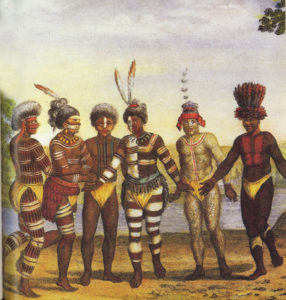 Tamien or Tamyen were Muwekma and refers to the Native Americans near the Guadalupe River and the Pueblo of San Jose. They would’ve come to Mission de Santa Clara first. That’s not our indigenous Evergreen bunch. Pala or Palenos refers to the Native Americans in and around nearby Rancho Canada dela Pala and Rancho Pala, both being named after a famed Ohlone leader to the. The Werwersen tribe is nearer to Halls Valley and Mt. Hamilton to the Northeast. Native people along Coyote Creek, the western boundary of Rancho Yerba Buena, were called the Aulintac tribe. These are opposite corners of the 25000+ acres of Rancho Yerba Buena and present day Evergreen. Who was in the middle? Who was there at Silver Creek Valley Country Club from 350 years ago? These people had a name and I would hate to misquote. I will get the official tribe name from the people themselves. I want to find our Evergreen Natives, especially since we have so much evidence of them.
Tamien or Tamyen were Muwekma and refers to the Native Americans near the Guadalupe River and the Pueblo of San Jose. They would’ve come to Mission de Santa Clara first. That’s not our indigenous Evergreen bunch. Pala or Palenos refers to the Native Americans in and around nearby Rancho Canada dela Pala and Rancho Pala, both being named after a famed Ohlone leader to the. The Werwersen tribe is nearer to Halls Valley and Mt. Hamilton to the Northeast. Native people along Coyote Creek, the western boundary of Rancho Yerba Buena, were called the Aulintac tribe. These are opposite corners of the 25000+ acres of Rancho Yerba Buena and present day Evergreen. Who was in the middle? Who was there at Silver Creek Valley Country Club from 350 years ago? These people had a name and I would hate to misquote. I will get the official tribe name from the people themselves. I want to find our Evergreen Natives, especially since we have so much evidence of them.
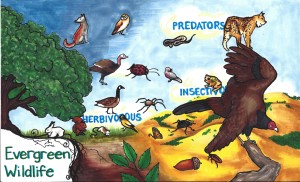 From all accounts, our Evergreen indigenous people lived a hunter gatherer lifestyle and a nomadic one at that. Tribes wouldn’t stick around in one place for long and live off the abundant land. Berries, roots, seeds, acorns, and natural grains would take up a large part of their diets. The Ohlone would hunt from a rich, diverse wildlife. A nomadic way of life kept the environment healthy. Ritual dances would be a huge part of their Kuksu Religion. Dance would be incorporated into rain, fertility, hunting, harvest and other sorts of ceremonies. I think Evergreen is gorgeous today. Could you imagine how stunning it was back then? Alum Rock Park is a great resource to get in touch with our Ohlone Natives. Alum Rock Park also has springs similar to Evergreen, along with artifacts and guides to engage with. It’s a popular field trip destination.
From all accounts, our Evergreen indigenous people lived a hunter gatherer lifestyle and a nomadic one at that. Tribes wouldn’t stick around in one place for long and live off the abundant land. Berries, roots, seeds, acorns, and natural grains would take up a large part of their diets. The Ohlone would hunt from a rich, diverse wildlife. A nomadic way of life kept the environment healthy. Ritual dances would be a huge part of their Kuksu Religion. Dance would be incorporated into rain, fertility, hunting, harvest and other sorts of ceremonies. I think Evergreen is gorgeous today. Could you imagine how stunning it was back then? Alum Rock Park is a great resource to get in touch with our Ohlone Natives. Alum Rock Park also has springs similar to Evergreen, along with artifacts and guides to engage with. It’s a popular field trip destination.
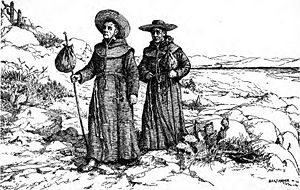 In the 19th century, where did they all go?
In the 19th century, where did they all go?
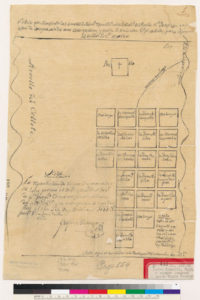 The Spanish would enter California in the 1760’s. The DeAnza Expedition and Spanish colonization would eventually wipe out the indigenous people across Santa Clara Valley. The Pueblo de San Jose would be established by the Spanish in 1777 and the Mission de Santa Clara de Asis would open right alongside it.
The Spanish would enter California in the 1760’s. The DeAnza Expedition and Spanish colonization would eventually wipe out the indigenous people across Santa Clara Valley. The Pueblo de San Jose would be established by the Spanish in 1777 and the Mission de Santa Clara de Asis would open right alongside it.
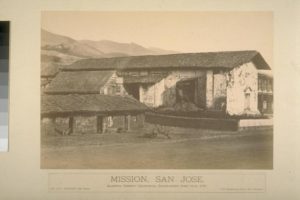 Mission de San Jose opened in June 11, 1797 by Father Fermiin Francisco de Lasuén. It’s located in present day Fremont, on Fremont Boulevard. The Native Americans baptized at Mission de Santa Clara de Asis, near present day Downtown San Jose, would go back home to their land miles away until Mission de San Jose opened nearby. Early days of Mission de Santa Clara and the adjoining Pueblo would see Winter flooding of Guadalupe River, so you couldn’t blame anyone for not wanting to stick around.
Mission de San Jose opened in June 11, 1797 by Father Fermiin Francisco de Lasuén. It’s located in present day Fremont, on Fremont Boulevard. The Native Americans baptized at Mission de Santa Clara de Asis, near present day Downtown San Jose, would go back home to their land miles away until Mission de San Jose opened nearby. Early days of Mission de Santa Clara and the adjoining Pueblo would see Winter flooding of Guadalupe River, so you couldn’t blame anyone for not wanting to stick around.
The Franciscan Missions along the El Camino Real would be hubs of agriculture at the time. Naval Bases at both San Francisco and Monterey would rely on the Santa Clara Valley to feed themselves. Olive orchards, mission grapes and livestock would be handled by a workforce made up of the Native American converts. After ten years of service, a worker would own a plot of land with a couple of location restrictions.
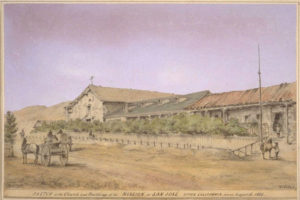 The Mission of San Jose would open up its doors to 33 people in 1797. Small pox and disease introduced by the Spanish would decimate populations at the Mission around 1805. An earthquake brought down the bell tower in 1808. Nonetheless, the population of Native Americans at the Mission de San Jose would grow steadily through the 1810’s-1820’s. A permanent church was constructed in 1809, only to be struck by an earthquake in 1868. A reconstruction stands there today on Fremont Boulevard. The indigenous people from the San Joaquin Valley at Mission San Jose would revolt in 1928-29. Even still, in 1831, the Mission housed over 1800 Native Americans from across the Bay Area and Central Valley.
The Mission of San Jose would open up its doors to 33 people in 1797. Small pox and disease introduced by the Spanish would decimate populations at the Mission around 1805. An earthquake brought down the bell tower in 1808. Nonetheless, the population of Native Americans at the Mission de San Jose would grow steadily through the 1810’s-1820’s. A permanent church was constructed in 1809, only to be struck by an earthquake in 1868. A reconstruction stands there today on Fremont Boulevard. The indigenous people from the San Joaquin Valley at Mission San Jose would revolt in 1928-29. Even still, in 1831, the Mission housed over 1800 Native Americans from across the Bay Area and Central Valley.
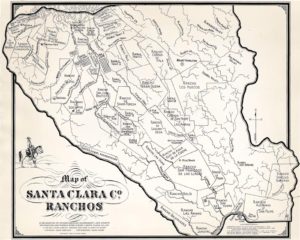 After a decade of civil war, Mexican Independence from Spain would be realized in 1822. The Territory of New Spain, or present day Mexico and California, would rule itself with the Roman Catholic Church’s protection. A few years later in 1834, the Franciscan Missions would be secularized by the Mexican Government and the Native Peoples would leave the Missions. By the 1840’s, the Native peoples were clumped together in Communities around the Silicon Valley, finding work on ranches where they could. It must’ve been hard to be an indigenous person letting go of your way of life then be turned out of your new home at Mission. Native Americans would return to their land which was granted to Mexican ranchers, like Antonio Chaboya, in the meantime, therefore have no place to return to. They would’ve been understandably upset. This is where we again encounter our Native Evergreen people.
After a decade of civil war, Mexican Independence from Spain would be realized in 1822. The Territory of New Spain, or present day Mexico and California, would rule itself with the Roman Catholic Church’s protection. A few years later in 1834, the Franciscan Missions would be secularized by the Mexican Government and the Native Peoples would leave the Missions. By the 1840’s, the Native peoples were clumped together in Communities around the Silicon Valley, finding work on ranches where they could. It must’ve been hard to be an indigenous person letting go of your way of life then be turned out of your new home at Mission. Native Americans would return to their land which was granted to Mexican ranchers, like Antonio Chaboya, in the meantime, therefore have no place to return to. They would’ve been understandably upset. This is where we again encounter our Native Evergreen people.
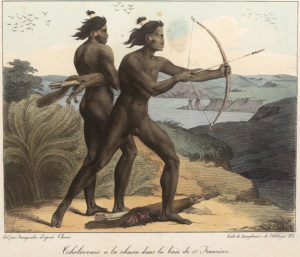 The Chaboyas would also defended their lands from returning indigenous peoples. The Evening News in 1916 would record an event before it faded in time and memory. Don Pedro Chaboya, brother of Evergreen’s Antonio and alcade or mayor of Pueblo de San Jose, held off a Native revolt in the 1840’s with a band of ranchers and defending the Mexican Rancheros. The returning indigenous people, 300 members strong, would steal over 600 horses and squat on various ranchos. The Ohlone Natives were nomadic originally. The indigenous peoples would lived off the land, leaving little trace. They had the carbon footprint we all want. The Ranchers probably wouldn’t have fought at all unless the theft of horses and cattle happened.
The Chaboyas would also defended their lands from returning indigenous peoples. The Evening News in 1916 would record an event before it faded in time and memory. Don Pedro Chaboya, brother of Evergreen’s Antonio and alcade or mayor of Pueblo de San Jose, held off a Native revolt in the 1840’s with a band of ranchers and defending the Mexican Rancheros. The returning indigenous people, 300 members strong, would steal over 600 horses and squat on various ranchos. The Ohlone Natives were nomadic originally. The indigenous peoples would lived off the land, leaving little trace. They had the carbon footprint we all want. The Ranchers probably wouldn’t have fought at all unless the theft of horses and cattle happened.
In Antonio Chaboya’s Rancho Yerba Buena, who couldn’t possibly oversee every acre at all time, they were difficult to locate. Rancho Yerba Buena found homesteaders setting up shop after years on Rancho Yerba Buena.
Ranch hands and Ranchers alike, Californios, would come together to defend their way of life. Several of Pedro’s brothers, Jose Berryessa, Sebastian Peralta, Augustine and Jose Bernal, Balentin Higuerra and Augustine Narvaez were just a couple notably ranchers in Pedro’s militia. The Mexican Band of Ranchers would run the Natives off as far as Pacheco Pass, lead by Pedro Chaboya. The Californios would overpower the Ohlones while they took refuge at Lake Tachi.
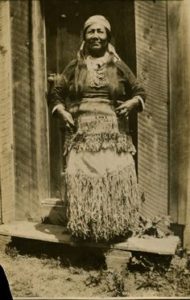 The Franciscan Missions would become Catholic Churches again in 1868 but the Ohlone Natives would not return in full force. By 1935, the Evergreen Native people were almost extinct. Of course they married into other families and assimilated to their new surroundings. Tracking them down has been really hard, but I have some leads to follow with the Missions themselves. The Ohlone peoples of Santa Clara County and beyond still haven’t been recognized by the Federal Government due to lack of knowledge about them. Their peaceful way of life should be praised, as everyone else who came to Evergreen enjoyed the bounty of the land too. Again, I like to wonder what the Evergreen area looked like before the Spanish colonialists came. Here’s the artwork that features our indigenous Evergreen populations.
The Franciscan Missions would become Catholic Churches again in 1868 but the Ohlone Natives would not return in full force. By 1935, the Evergreen Native people were almost extinct. Of course they married into other families and assimilated to their new surroundings. Tracking them down has been really hard, but I have some leads to follow with the Missions themselves. The Ohlone peoples of Santa Clara County and beyond still haven’t been recognized by the Federal Government due to lack of knowledge about them. Their peaceful way of life should be praised, as everyone else who came to Evergreen enjoyed the bounty of the land too. Again, I like to wonder what the Evergreen area looked like before the Spanish colonialists came. Here’s the artwork that features our indigenous Evergreen populations.
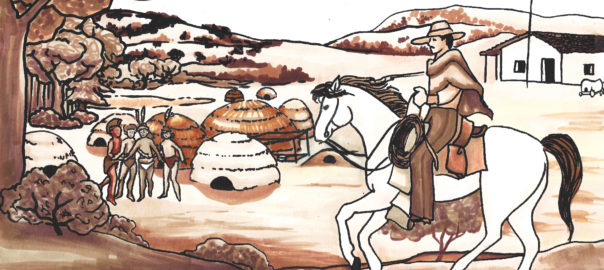
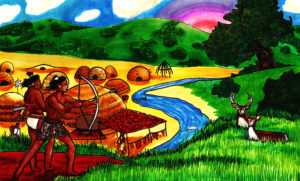
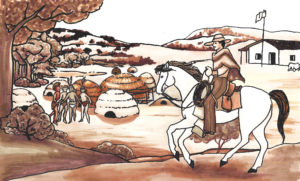
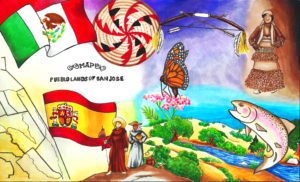
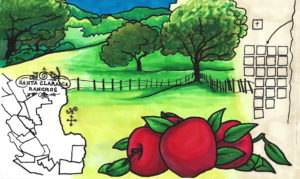
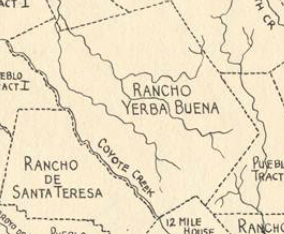

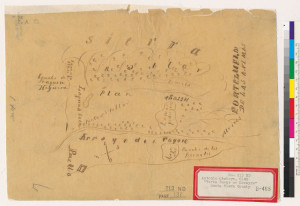
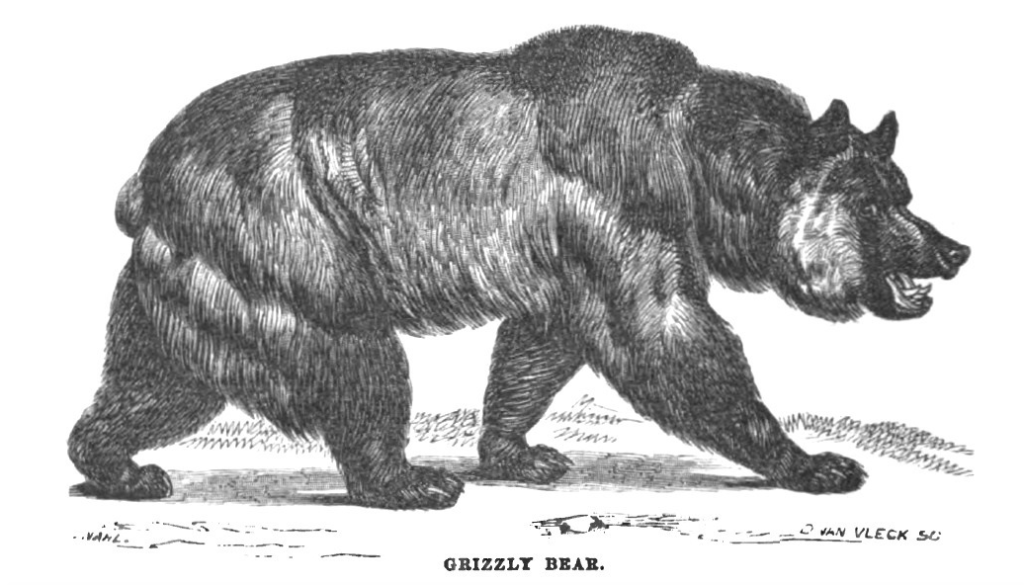
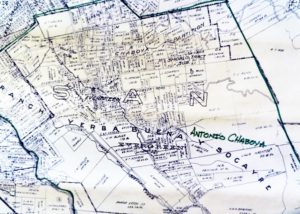
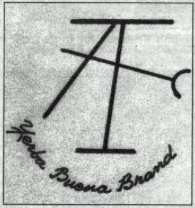 After the Mexican American War, Antonio Chaboya again was granted Rancho Yerba Buena by the US Government in 1858, one of the first real estate cases heard over “squatters’ rights”.
After the Mexican American War, Antonio Chaboya again was granted Rancho Yerba Buena by the US Government in 1858, one of the first real estate cases heard over “squatters’ rights”.